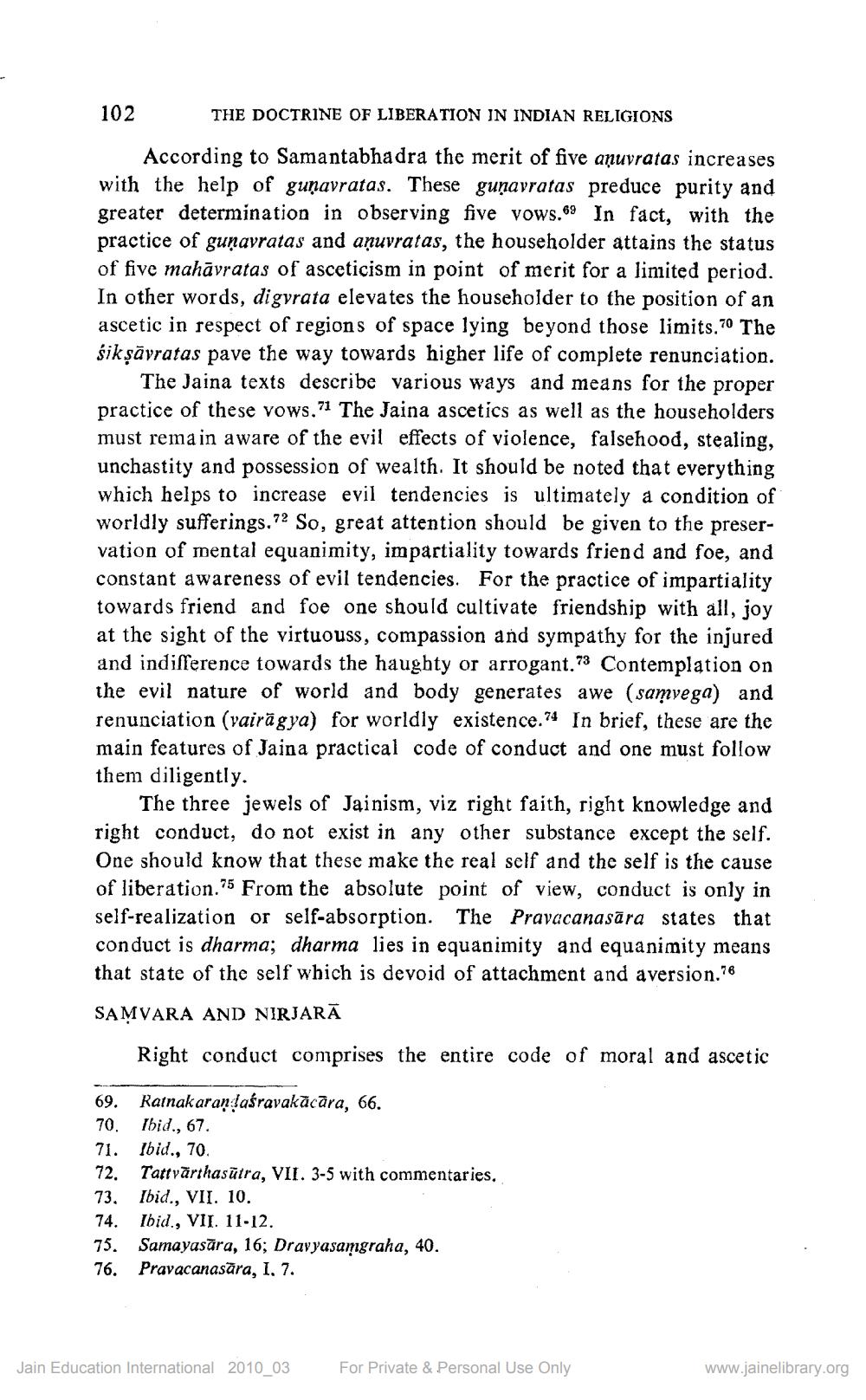________________
102
THE DOCTRINE OF LIBERATION IN INDIAN RELIGIONS
According to Samantabhadra the merit of five anuvratas increases with the help of gunavratas. These guņavratas preduce purity and greater determination in observing five vows.69 In fact, with the practice of guņavratas and anuvratas, the householder attains the status of five mahāvratas of asceticism in point of merit for a limited period. In other words, digvrata elevates the householder to the position of an ascetic in respect of regions of space lying beyond those limits.70 The śikṣāyratas pave the way towards higher life of complete renunciation.
The Jaina texts describe various ways and means for the proper practice of these vows.71 The Jaina ascetics as well as the householders must remain aware of the evil effects of violence, falsehood, stealing, unchastity and possession of wealth. It should be noted that everything which helps to increase evil tendencies is ultimately a condition of worldly sufferings.72 So, great attention should be given to the preservation of mental equanimity, impartiality towards friend and foe, and constant awareness of evil tendencies. For the practice of impartiality towards friend and foe one should cultivate friendship with all, joy at the sight of the virtuouss, compassion and sympathy for the injured and indifference towards the haughty or arrogant.73 Contemplation on the evil nature of world and body generates awe (samvega) and renunciation (vairāgya) for worldly existence.74 In brief, these are the main features of Jaina practical code of conduct and one must follow them diligently.
The three jewels of Jainism, viz right faith, right knowledge and right conduct, do not exist in any other substance except the self. One should know that these make the real self and the self is the cause of liberation.75 From the absolute point of view, conduct is only in self-realization or self-absorption. The Pravacanasāra states that conduct is dharma; dharma lies in equanimity and equanimity means that state of the self which is devoid of attachment and aversion.76
SAMVARA AND NIRJARĀ
Right conduct comprises the entire code of moral and ascetic
69. 70. 71. 72. 73. 74. 75. 76.
Ratnakaran daśravakācāra, 66. Ibid., 67. Ibid., 70 Tattvārthasūtra, VII. 3-5 with commentaries. Ibid., VII. 10. Ibid., VII. 11.12. Samayasāra, 16; Dravyasamgraha, 40. Pravacanasāra, 1. 7.
Jain Education International 2010_03
For Private & Personal Use Only
www.jainelibrary.org




